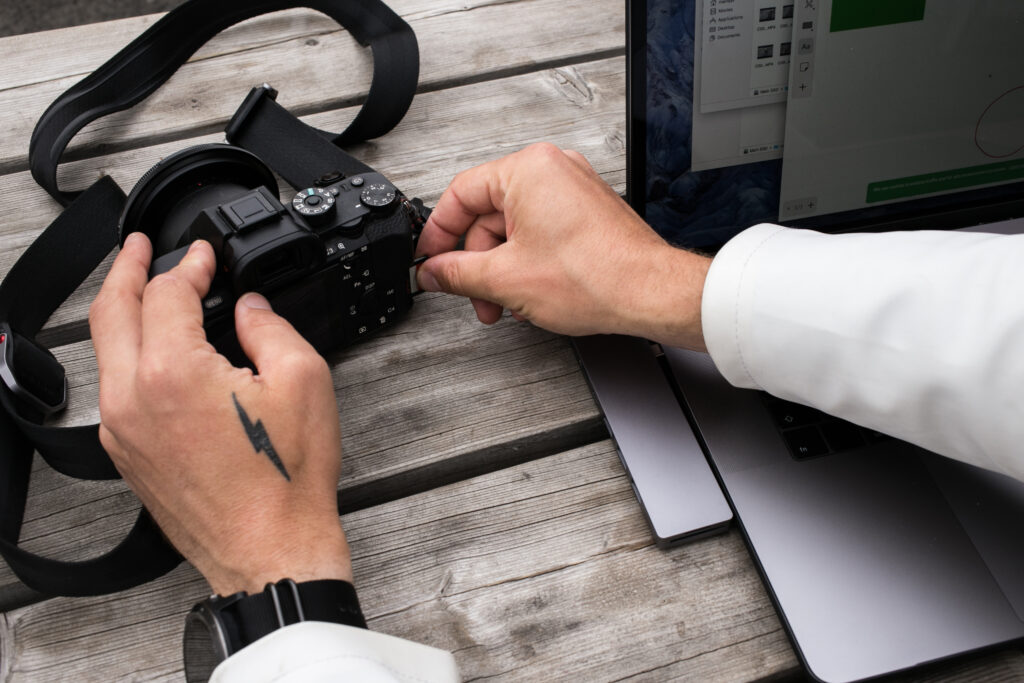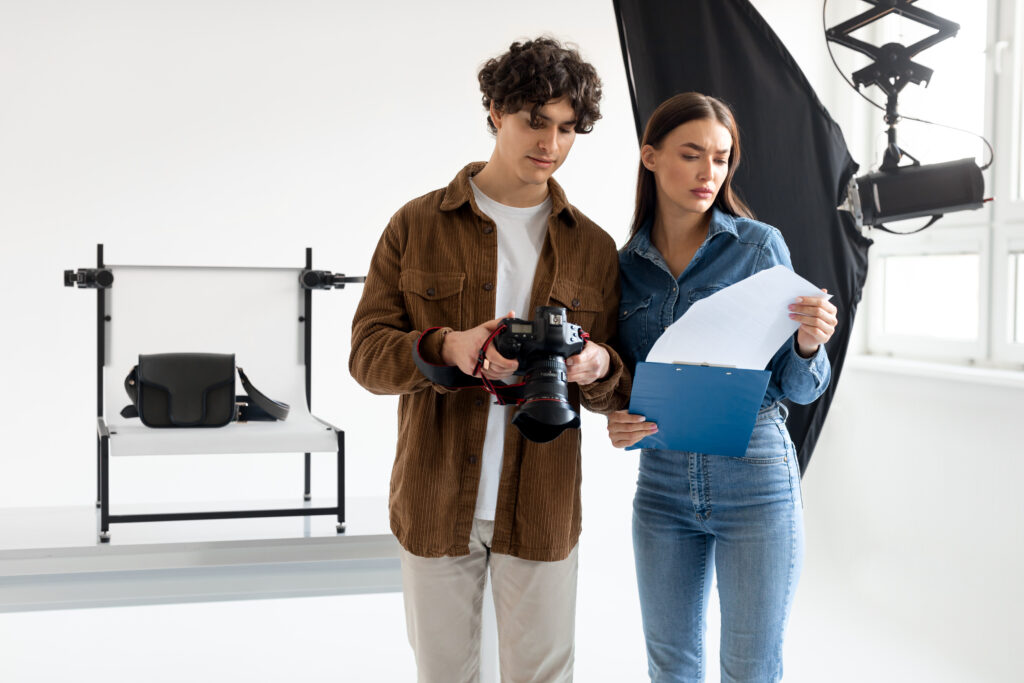Don’t Panic! How to Handle Unexpected Issues During a Photo Shoot
Don’t panic! When you’re on a photo shoot and an unexpected issue arises, it can be easy to feel overwhelmed.
But with the right techniques, you can stay cool under pressure and handle any challenging situation that comes your way.
In this blog post, we’ll explore some tips and tricks for how to navigate unexpected issues during a photo shoot so that you can continue to produce great work. Keep reading to learn more!
Preparation is Key: Planning Ahead for Potential Challenges

Preparation is key when it comes to handling unexpected issues during a photo shoot.
While you can’t predict every potential challenge that may arise, taking the time to plan ahead and consider possible scenarios can greatly minimize the impact of these issues and help you stay calm and focused.
One important aspect of preparation is ensuring that you have all the necessary equipment and backup supplies. This means bringing extra batteries, memory cards, and even an extra camera if possible. It’s also a good idea to have a backup plan for shooting locations in case of unforeseen circumstances such as bad weather or location closures. By having alternative options in mind, you can quickly adapt and continue the shoot without wasting time or losing the opportunity for great shots.
Another aspect of preparation is understanding the client’s expectations and vision for the shoot. Take the time to communicate with them beforehand and have a clear understanding of their goals and preferences. This will allow you to plan the shoot accordingly and ensure that you’re on the same page throughout the process.
Additionally, consider creating a shot list or a storyboard for the shoot. This will help you stay organized and ensure that you capture all the necessary shots. It also serves as a reference point during the shoot, allowing you to check off each shot as you go.
Lastly, always have a backup plan for the backup plan. No matter how prepared you are, there’s always a chance that something unexpected will happen. By having multiple contingency plans in place, you can quickly adapt and keep the shoot moving forward, minimizing any potential disruptions.
Keep a Clear Head: Maintaining Focus and Calm During High-Stress Moments

In the midst of a photo shoot, high-stress moments can easily arise.
Whether it’s a technical issue with your equipment, a challenging client, or unexpected weather conditions, it’s important to keep a clear head and maintain focus. One of the best ways to stay calm in these situations is to remind yourself that you have prepared for this moment. Remember all the steps you took in advance, from planning the shoot to packing backup supplies. By acknowledging your preparedness, you can boost your confidence and alleviate some of the stress.
Another technique to maintain focus is to take a deep breath and step away from the situation for a moment. If you find yourself feeling overwhelmed, pause and take a short break. This will allow you to regroup, clear your mind, and approach the issue with a fresh perspective. It’s important to remember that you are in control of your own reactions and emotions.
Moreover, staying present in the moment can help you stay focused and calm. Instead of dwelling on what went wrong or worrying about what might go wrong, direct your attention to the present moment. Focus on the task at hand and trust in your skills and abilities. This will help you stay grounded and make rational decisions instead of being consumed by stress.
Lastly, remember to prioritize your well-being. Taking care of yourself physically and mentally is crucial in high-stress situations. Make sure you are getting enough rest, staying hydrated, and practicing self-care. By taking care of yourself, you will be better equipped to handle any challenges that come your way.
Communication is Essential: Working with Clients and Team Members to Address Issues

Effective communication is vital when handling unexpected issues during a photo shoot.
Whether it’s a last-minute change in location or a client who is not satisfied with the shots, clear and open communication can help resolve any issues and keep the shoot on track.
When faced with an unexpected challenge, the first step is to communicate with your team members. This includes the client, assistant, and anyone else involved in the shoot. Share the issue and discuss possible solutions together. By involving everyone, you can gather different perspectives and come up with a plan that works for everyone involved.
Listening is just as important as speaking when it comes to communication. Take the time to listen to the concerns and feedback of your clients and team members. Understanding their perspective can help you find common ground and address the issue effectively.
In addition, it’s crucial to be proactive in your communication. Instead of waiting for the problem to escalate, address it as soon as possible. Be transparent about the situation and any potential impacts it may have on the shoot. By keeping everyone informed, you can manage expectations and work together to find a solution.
Lastly, be professional and respectful in your communication. Stay calm and avoid becoming defensive, even if the issue is challenging or frustrating. Remember that maintaining positive relationships with clients and team members is key for future collaborations.
In summary, effective communication is essential for addressing unexpected issues during a photo shoot. By involving your team members, listening actively, being proactive, and maintaining professionalism, you can overcome challenges and ensure a successful shoot.
Flexibility is Crucial: Adapting to Unexpected Changes and Adjusting Plans Accordingly

Flexibility is a crucial skill to have when it comes to handling unexpected changes and adapting plans accordingly during a photo shoot.
No matter how well you prepare, there will always be factors that are out of your control. It’s important to be able to think on your feet and adjust your plans in order to keep the shoot on track and produce great work.
When faced with an unexpected change, the first step is to assess the situation and consider all possible options. This may involve thinking creatively and finding alternative solutions to achieve the desired outcome. For example, if the weather suddenly takes a turn for the worse, you may need to find a nearby indoor location or make use of umbrellas and rain covers to protect your equipment.
Flexibility also means being open to collaboration and input from your team members. They may have valuable insights or suggestions that can help overcome the challenges at hand. By working together and considering different perspectives, you can come up with a solution that best fits the circumstances.
In addition, being adaptable requires a mindset of letting go of perfection. Sometimes, you may need to compromise or make adjustments to your original vision in order to work with unexpected changes. This can be challenging, but by remaining flexible and focusing on the end goal, you can still create amazing images.
Overall, flexibility is crucial in handling unexpected changes during a photo shoot. By being open-minded, thinking creatively, and collaborating with your team, you can adapt your plans accordingly and successfully navigate any unexpected challenges that arise.
Follow Up and Learn: Debriefing and Reflecting on Challenging Situations to Improve Future Shoots

Once a photo shoot is complete, it’s important to take the time to debrief and reflect on the challenging situations that arose. This process allows you to learn from your experiences and make improvements for future shoots.
Here are some steps to follow for effective debriefing and reflection:
- Take notes. Write down any unexpected issues that occurred during the shoot, along with how you handled them. This will serve as a reference point for future debriefing sessions.
- Analyze the situation. Review each challenging situation and evaluate what went well and what could have been improved. Identify any patterns or recurring issues that may require additional attention in future shoots.
- Seek feedback. Reach out to your team members, including clients, assistants, and anyone else involved in the shoot, and ask for their feedback. This can provide valuable insights and different perspectives on how the challenges were handled.
- Identify lessons learned. Based on your analysis and feedback received, identify the key lessons learned from the challenging situations. This could include adjustments to your preparation process, communication strategies, or flexibility in adapting to unexpected changes.
- Make improvements. Use the lessons learned to implement improvements in your future shoots. Update your planning process, adjust your communication strategies, or enhance your flexibility. By continuously learning and evolving, you can become better equipped to handle unexpected issues in the future.
- Evaluate progress. As you continue with your photography career, periodically assess your progress in handling unexpected issues. Reflect on whether the improvements made have been effective and identify any new challenges that may require further attention.
By following these steps and regularly debriefing and reflecting on challenging situations, you can improve your skills and ensure a smoother and more successful photo shoot experience.
Ready to sell your property? Give us a call today and learn more about our professional photography services and marketing that can boost your property listing!
Plus, explore our virtual assistant coaching program to level up your business. Don’t forget to tune into our new podcast for even more valuable insights!
